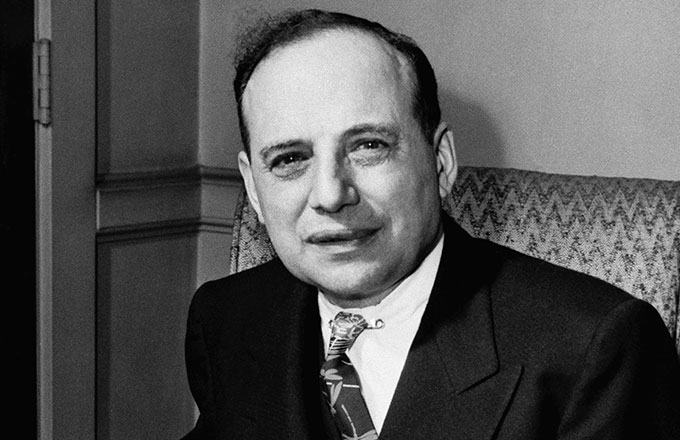
Let’s turn back the clock to 1941.
In Nebraska, US, there’s a boy who’s eleven years old. His father owns a stockbrokerage, which he frequently visits to chalk on prices on the office blackboard.
Whilst very young to be making any sort of investment, this young boy decides to hedge his bets and puts $38 down on some city stock. Soon after investing in this stock, the price tumbled all the way down to $27.
You’d think the young boy may give up, right?
However, he waits. The price eventually goes up to $40 per share, where he sells. He makes a measly $2, but it’s a start.
Now, as you’ve probably already guessed, the young boy is Warren Buffett. At such a small age, Buffett had made his very first investment.
Now he’s one of the richest men on earth, but you’d be mistaken to think he managed this on his own.
His vice-president at Berkshire Hathaway, Charlie Munger, has been his right-hand man at helping him make decisions on investments (some of which include American Express, Coca-cola, and IBM).
So, if this is all about investing, what’s this got to do with helping you to become a better, smarter product manager?
The Graham Value Investing Framework
Investment might not be the first thing on your mind when you’re asking yourself “Is feature X going to help us and our customers?”.
But deciding on a product roadmap is partly an investment.
You’re betting in the fact you and your team can make the and stay clear of the wrong ones.
And this isn’t easy. You have to account for features your competitors are working on, whether it fits with your grand vision, and if your customers will respond well to the changes.
The Graham Value Investing Framework makes this a little easier.
Developed by a guy called Benjamin—you guessed it—Graham, it helps you make smart decisions on investing with time, money, and resources.

Whilst a service like Trello or ProductBoard can help you keep your product decisions, notes, and ideas in order—it’s still tough to know what to work on.
This framework fits investments into three distinctive buckets:

-
In. You and your team have decided you’re doing this thing. You’ve done your user research, spoken to engineers and support, and you’re 100% going to do this. It makes sense for the company.
-
Out. You’ve thought about it and decided it’s a no-go. Either it’ll ruin your product (confuse customers or complicate things) or the feedback on it has been dismal. You’ll not get the return you need back.
-
Too Tough. Either technology isn’t ready or you don’t have the resources too pull it off. Whilst it may put you ahead of the curve, it’s just not possible.
Fitting product features and ideas into these three buckets can help you and your team make smarter product decisions. But deciding which bucket to put these features is the next problem.
Pushing Product Features into Buckets
Part of your job as a product manager is to make those difficult decisions. Whilst the buckets are there to use, it’s still tough to make an executive decision.
Charlie Munger has the same problems. Investing is a long, patient game. It can take years to see whether you made the right call.
Here’s some tips to help you pick the right bucket.
Value the feature on top of the core offering
You’ve managed to build something people want—nice one. It’s the fundamental rule that powers every startup. But adding a feature on top of that core offering is risky.
-
Does it make it more difficult to explain your core offering?
-
Do you have to adjust your position in the marketplace? If so, will you be able to compete?
-
Will the new feature overshadow your core offering? Remember, your customers chose you because they saw that very first feature. Take the time to chat to your customers about a new direction.
Create a beta for the new feature
Going charging in and pushing a new feature without first seeing how customers react is a big mistake.
By skipping out a beta stage you risk bugs and almighty user churn. No product manager wants that, right?
Just like Munger gets shares at a bargain price (margin of safety), you’ll want to keep your distance from risk. Slowly role out a feature and if it’s not going the way you expected, pull out.
Avoid false-positives
You roll out your fancy new feature to a set group of beta testers. The results are fantastic! Users stick around longer, click more things, and score you highly on the NPS system.
Be suspicious.
Don’t go pushing the new feature to everyone because these 10 users loved it. Make sure you understand exactly why they loved it and try to get them on a call.
Remain Unemotional
Emotion killed the product manager? Ok, so that’s not a saying, but maybe it should be.
You need to make smart decisions based on the facts in front of you. You may think sticking artificial intelligent on your product will make it 10x better, but perhaps your team and customers don’t.
Make sure you keep a cool head. It’s your job to make informed decisions, not ones based on how excited you are to see this thing in real life.
Wrong feature for the team? They’ll grudgingly build the feature, but it won’t be the shiny, polished thing you were looking for.
Wrong feature for customers? They’ll probably not notice, and the feature will go unloved. Wasted resources.
Always Be Learning
At Berkshire Hathaway, learning is a priority for both Buffett and Munger. Despite it looking like a time-waste, it’s actually very beneficial.
If you watched Warren Buffett with a time clock, I would say half of all the time he spends is just sitting on his ass and reading.
And a big chunk of the rest of the time is spent talking on the phone or personally with people he trusts.
— Charlie Munger
As a product manager, you need to be learning from your customers, team, and the ins-and-outs of the investments (features) you make.
You must be able to guide your team and company to make rational product decisions and pass on exciting but resource-sucking roadmaps.